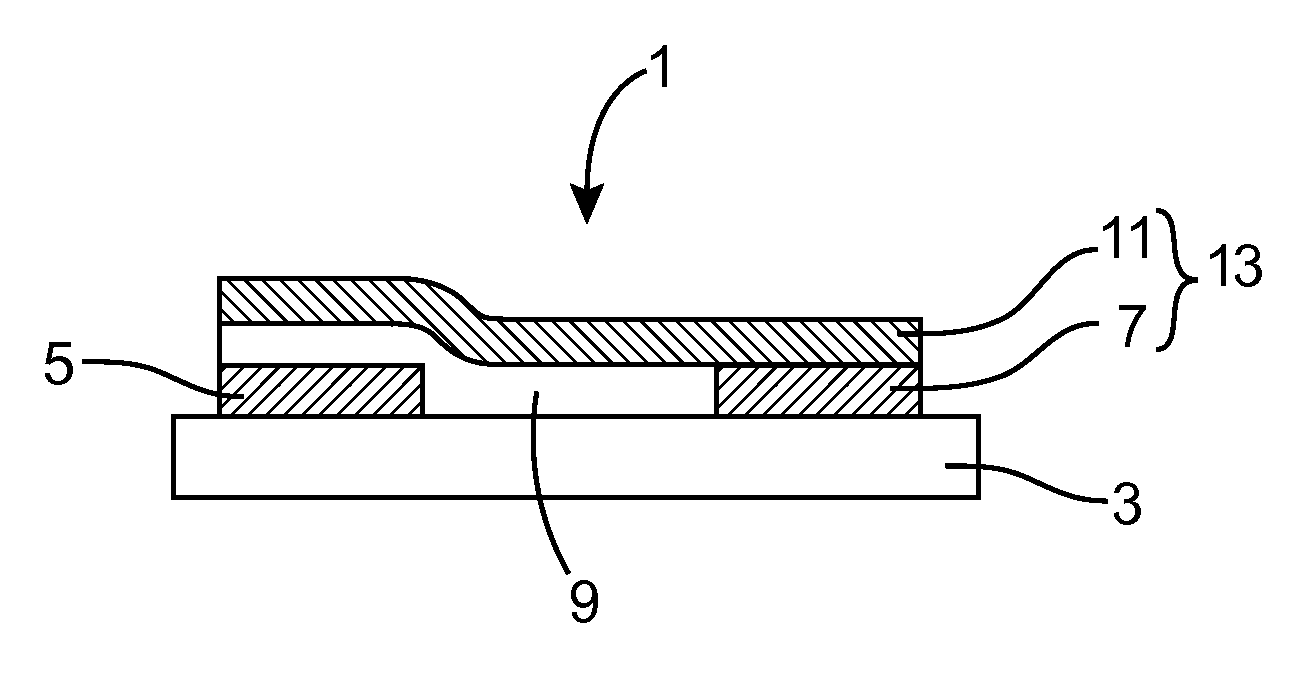Moisture sensor including, as a moisture-absorbing layer, a polymer layer including a mixture of polyamides
a technology of moisture sensor and polyamide, applied in the field of humidity sensor, can solve problems such as hysteresis and other problems
- Summary
- Abstract
- Description
- Claims
- Application Information
AI Technical Summary
Benefits of technology
Problems solved by technology
Method used
Image
Examples
Embodiment Construction
[0039]The invention thus relates to a humidity sensor including, as a humidity absorbent layer, a polymer layer including a polymer blend including a first polyamide and a second polyamide, where the said second polyamide includes, in its repetitive units, a number of carbon atoms greater than that of the repetitive units of the first polyamide.
[0040]Before going into greater detail in the description of the invention, we shall specify the following definitions.
[0041]A repetitive unit is understood to mean a bivalent group derived from a component after polycondensation of it.
[0042]A polyamide is understood to mean a polycondensate including, in its main chain, amide groups —C(═O)—NH— conventionally resulting from a step of polycondensation between the amine functional groups and carboxylic acid of compounds constituting these functional groups.
[0043]Thus, by producing sensors having as a humidity absorbent layer a layer including a blend of separate polyamides (the second polyamide...
PUM
| Property | Measurement | Unit |
|---|---|---|
| pore diameter | aaaaa | aaaaa |
| pore diameter | aaaaa | aaaaa |
| relative humidities | aaaaa | aaaaa |
Abstract
Description
Claims
Application Information
 Login to View More
Login to View More - R&D
- Intellectual Property
- Life Sciences
- Materials
- Tech Scout
- Unparalleled Data Quality
- Higher Quality Content
- 60% Fewer Hallucinations
Browse by: Latest US Patents, China's latest patents, Technical Efficacy Thesaurus, Application Domain, Technology Topic, Popular Technical Reports.
© 2025 PatSnap. All rights reserved.Legal|Privacy policy|Modern Slavery Act Transparency Statement|Sitemap|About US| Contact US: help@patsnap.com



